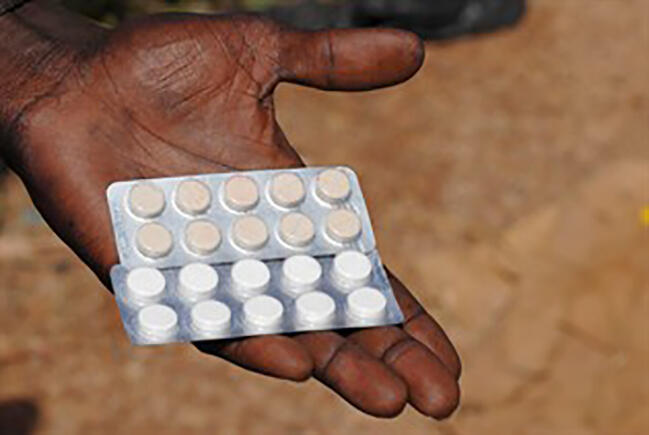
Scientists from LSTM’s Research Centre for Drugs and Diagnostics (RCDD) have, along with colleagues at the University of Liverpool (UoL), identified a path to overcome the resistance to current malaria drugs using a powerful technique, called X-ray crystallography.
X-ray crystallography has proven a powerful tool for the development of new drugs for malaria and many other conditions. By shining ultra-bright X-rays at crystals of proteins it is possible to see the precise arrangement of all of the constituent atoms and how various chemicals including drug compounds may bind to them.
Malaria is a significant problem in many parts of the world with an estimated 219 million cases in 2012 and over half a million deaths, the majority of which were pregnant women and children under the age of five. Eradication programmes have had some success in reducing mortality rates by targeting the mosquito that carries the parasite which causes malaria and the development of a plasmodium vaccine, which continues to show promise. However despite this success instances of a multidrug resistant Plasmodium parasite, including those causing the most lethal strain of malaria, Plasmodium falciparum, have been increasing.
As malaria is caused by the parasite multiplying within the infected person, targeting and inhibiting those proteins that are essential for the survival of the parasite makes it possible to prevent or cure the disease. Cytochrome bc1, a large membrane protein found in the mitochondria of cells, is a proven drug target in the prevention and treatment of malaria which is why the mode of action of currently available drugs, such as Malarone, is to bind to it.
The Liverpool research, published in Proceedings of the National Academy of Sciences of the United States of America (PNAS), shows that with the use X-ray crystallography it is possible for scientists to directly observe how a compound binds to its target in a way that has not been previously possible, and shows that two next-generation anti-malarial compounds bind at the Qi site of cytochrome bc1. Dr Svetlana Antonyuk, lead crystallographer from Liverpool's Institute of Integrative Biology, said "this study represents a significant milestone as it is the first structure of a membrane protein from Liverpool. This capability offers new opportunities to impact on a major global health problems"
Cytochrome bc1 has two binding sites and much of the work on current drugs has been based on the Qo site where the active ingredient of Malarone binds. By binding at the Qi site, these next-generation compounds are able to overcome resistance and remain active against the parasite.
LSTM’s Professor Giancarlo Biagini, who is one of the corresponding authors on the study said: “For several years we have been working on targeting the bc1 enzyme complex in the mitochondria of the malaria parasite for the development of new antimalarial drugs that can overcome resistance. However, much of this work has been performed blind in that we were never sure exactly where our compounds were binding. Co-crystallisation of the bc1 enzyme with a series of antimalarial compounds has revealed important information of how to make safe inhibitors that should also overcome known parasite resistance mechanisms.”
Malaria is one of the diseases currently being targeted by LSTM’s RCDD, who are looking at new compounds and other interventions to meet the urgent need created by problem of drug resistance. The team is an experienced multi-disciplinary group of experts working together to develop new drugs and diagnostics, alongside partners in industry, academia and other NGOs.